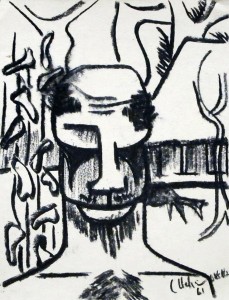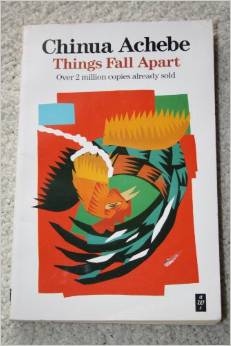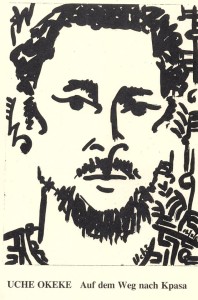
Uche Okeke: Works on Paper, 1958-1993
January 15-February 21, 2015
Skoto Gallery New York
About:
Church in the Forest, 1966.
Born in 1933 in Nimo, Nigeria.
Beginning from the 1950s, he has literally traversed the landscape of modern art in Nigeria, leaving in his stride bold, remarkable, and enduring foot prints which have inspired many Nigerian artists and Africanist art historians, including some of the world’s avant-garde. That Okeke carried the Uli experiment beyond the walls of Zaria and stood in the forefront of its transformation into a modern idiom in the 1970s, from the studios at Nsukka remains a feat of inspired originality. That his “natural synthesis” philosophy blossomed to become fount and factor in the development of modern art in Nigeria represents a logical and sustained triumph of both vision and imagination. All these have transformed him into a father figure in the history of Nigerian modernism and he has carried the burden of history so gracefully that his ideas and legacies are sure to find followers among generations of artists to come. Uche Okeke’s professional practice and academic career has been and continues to be very rich in content. This resume therefore encapsulates some key points in his artistic and scholarly pursuits.
 Forest, 60’s.
Forest, 60’s.
Okeke and Négritude:
 Ana Mmuo, 1961
Ana Mmuo, 1961
Négritude originated with a group of African and Caribbean students in Paris led by Martinican poet Aimé Césaire, French Guianese poet Léon Damas, and the future Senegalese President Léopold Sédar Senghor. A rejection of colonial racism, Négritude aimed to reclaim the value of blackness and African culture. It was influenced by both Surrealism and the Harlem Renaissance.
With the advent of the Second World War, the ideas of Négritude spread as its leading figures left Paris for the Caribbean and Africa. New forms of modernism influenced by Négritude arose in these locations, including tendencies identified with creolisation in the Caribbean and the Natural Synthesis movement in Nigeria.
Creolisation reflected a blending of cultures and the acknowledgement by artists and writers that their cultural influences did not come solely from Africa. The concept of Natural Synthesis was conceived by the artist Uche Okeke following the independence of Nigeria in 1960. It proposed a fusion of European modernism with local African aesthetic influences, creating an artistic agenda for a nation reborn.
And:

Okeke illustrated the famous book ‘Things Fall Apart’ by Chinua Achebe.


